And just like that, it’s autumn.
Not, I should add, that this should fill us with gloom. It is, after all, the season of crab-apple jelly and wild mushrooms, of plums and blackberries, of dahlias glowing in the evening sunlight and scarlet rosehips ripening in the hedgerows.
It’s also the time of new beginnings as much as it’s of endings, the important hinge in the growing year where any fresh sowings and/or plantings we make in the months ahead will help to create a garden or allotment that’s heaving with flowers and fresh produce next spring and summer. Wondering how to get started? Here’s some inspiration…
1: Order flower bulbs
READ MORE
Don’t make the age-old mistake of leaving it to the very last minute, or of buying tired, possibly diseased, poor-quality leftovers at the end of the autumn bulb planting season. Instead, it’s at this time of the year that suppliers have the greatest selection of high-quality, healthy stock of the most desirable varieties of spring and early summer flowering bulbs, from tulips, narcissus, alliums and fritillaries to dainty beauties such as crocus, snowdrops, scillas, bluebells, anemones and hyacinths.
One of the very best and longest established is Dublin-based Mr Middleton, which has been supplying Irish gardeners for over 40 years and whose owner Thomas Quearney still walks his suppliers’ bulb fields every year to ensure that he sources the very highest quality stock.
Mr Middleton’s much-anticipated annual Flower Bulb Open Day takes place next Saturday 9th September (9am-5pm) at the RDS, Ballsbridge, Dublin 4, an event where you’ll find many of the country’s keenest gardeners eagerly snapping up the most coveted varieties before they run out of stock. Alternatively, bulbs can also be ordered directly from its website (mrmiddleton.com).
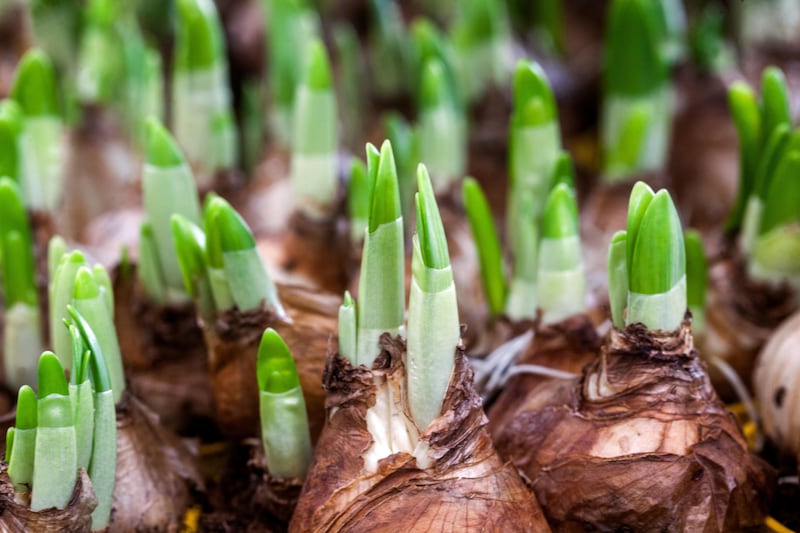

Other recommended bulb suppliers include Cork-based Fruithill Farm, which sells a small selection of organically-produced bulbs (fruithillfarm.com) and Connecting to Nature, which stocks a small range of Irish-produced flower bulbs grown in Waterford (connectingtonature.ie ). All spring and early summer flowering bulbs should be planted over the coming months (just hold off on tulips until late autumn).
2: Sow seed
It may be early September but that doesn’t mean that the sowing season is over for another year. Instead, while the soil is moist and warm and light levels are still relatively high, is a great time to sow seed of many kinds of hardy flowering annuals such as love-in-a-mist (Nigella sp), orlaya (Orlaya grandiflora), ammi (Ammi majus and Ammi visnaga) , cornflower (Centaurea), larkspur (Consolida), and corncockle (Agrostemma githago) to give really vigorous, early-flowering, floriferous plants next summer.
It’s also a great time to sow seed of many kinds of vegetables including carrots, hardy overwintering lettuce varieties including Winter Gem and winter butterheads, rocket, oriental greens, American landcress, Swiss chard, lamb’s lettuce, spinach and herbs such as coriander, chervil and parsley in the polytunnel or glasshouse.
Both hardy flowering annuals and vegetables can either be direct-sown (more of a gamble but it saves on the time-consuming labour of pricking out and then transplanting young seedlings, and most suitable for certain species that really resent being transplanted),or sown into modules/small pots for transplanting out into their final growing positions as young seedlings.
The latter is more labour-intensive, but is a great way to protect young seedlings from slug and snail attack while it also protects against unfavourable conditions for successful germination.
Now is also the perfect time of year to direct-sow a new lawn or re-seed any bald patches in an existing one. Or if the perfect green sward isn’t your cup of tea, then this is a great time to direct-sow seed of what are known as pictorial meadows that use a mix of non-native varieties of hardy annuals and/or perennials for maximum floral impact (pictorialmeadows.co.uk).
Alternatively, if you’re the proud owner of a native wildflower meadow, then this is the best time to direct-sow freshly harvested ripe seed of yellow rattle to boost biodiversity and help suppress the growth of thuggish, overly-vigorous perennial grasses such as Yorkshire Fog.
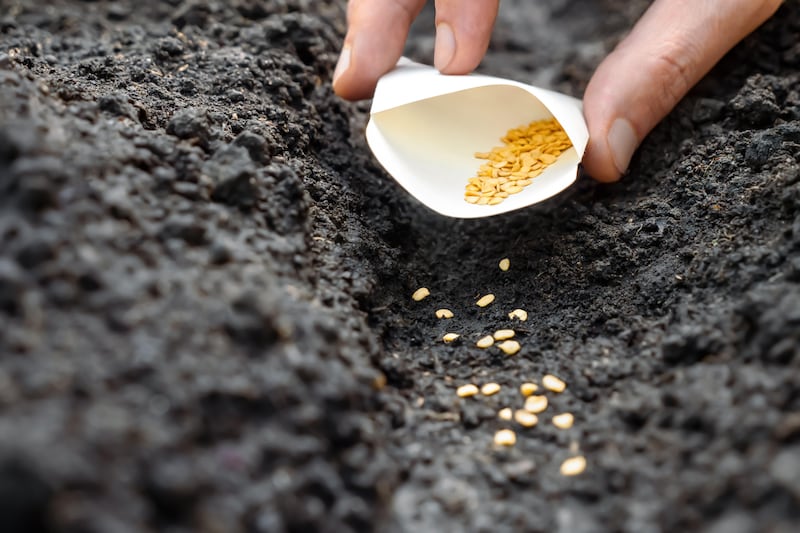
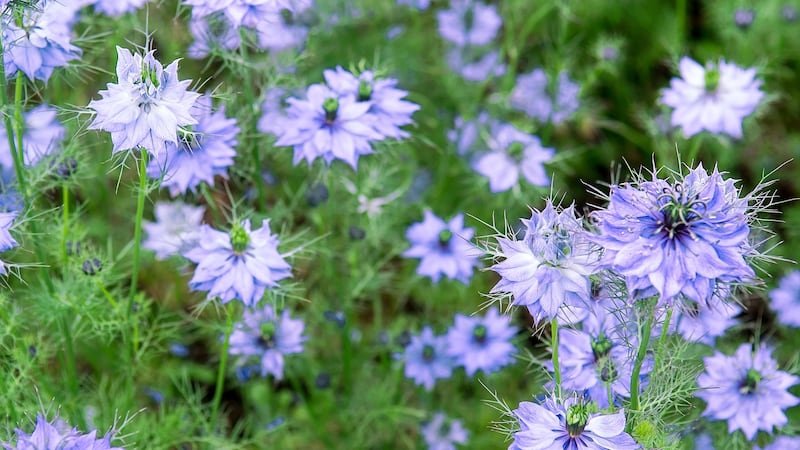
Finally, early September is also a great time to direct-sow seed of a variety of green manures to replace lost soil nutrients, revitalise beneficial soil micro-organisms and protect the soil from erosion and leaching of nutrients. Suitable varieties to sow in early September include field beans, clover, phacelia, buckwheat and winter vetch/ tares, seed of which is available to order from quickcrop.ie; fruithillfram.com and mrmiddleton.com
Whether module-sown or direct sown, always do your best to optimise germination rates by using fresh, high-quality seed and sowing into moist but free-draining, weed-free soil raked to a very fine tilth (think crumbly breadcrumbs) or a high-quality seed compost (Klasmann’s peat-free and peat-reduced composts are available to order from fruithillfarm.com and are the very best out there).
Covering direct-sown seed with a layer or two of horticultural fleece (pin or weigh this down with soil/ stones to stop it being blown off) will also really help to boost germination rates by gently raising soil temperatures and protecting young seedlings from cold winds
3: Save your seeds
Not only is September a great month for seed sowing, it’s also traditionally an excellent month for seed saving. True, our cool, wet, sun-starved summer means that it hasn’t been a vintage year for home seed production, but there’s still plenty of fresh, viable seed of annuals, biennials, perennials, shrubs, trees and wildflowers ripening in our gardens and allotments that can be harvested for free over the coming weeks. It’s also a brilliant way to support biodiversity and seed sovereignty, save money and become more self-sufficient.
As is always the case with great gardening, timing is all-important as is technique. For best results, try to harvest on a dry, still day, choose only fully ripened seed, and place the seed somewhere undercover to further dry before stored it in a labelled, dated paper envelope in a cool, dark place for later use. Classic signs of ripeness include yellow/pale brown, firm seed capsules and seed that’s firm, dry-ish and brown in colour rather than soft, damp and green.

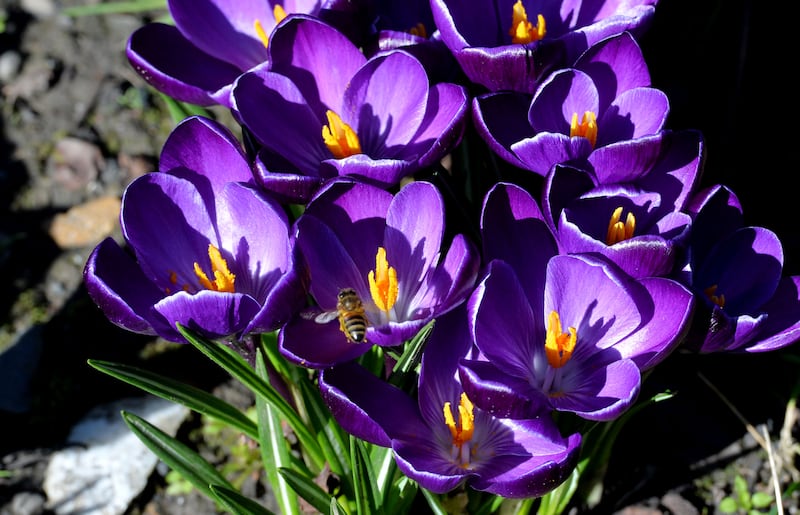
However, in some cases (for example tomato and cucumber seed), it’s the wet seed that needs to be extracted from the fully ripe fruit and then left to gently ferment in a small container of water for a few days to remove its gelatinous coating.
In this case, squeeze the juicy pulp of the ripe fruit into a bowl, add water and then store it somewhere warm indoors for a few days before carefully pouring it off along with any floating seeds (these aren’t viable) to leave the viable seeds which will have sunk to the bottom. Rinse these carefully before placing them on a plate or on some sheets of kitchen paper in a warm, well-ventilated room out of direct sunlight-to dry. Once dry, store in a labelled paper envelope somewhere cool and dry.
For lots more information on how best to collect and store the seed of different species, see theseedsite.co.uk and howtosaveseeds.com.
Cork-based organic seed producer Brown Envelopes Seeds also sells a useful 20-page booklet with instructions and tips on home-saving seed of vegetables (€5, brownenvelopeseeds.com).
Alternatively, its founder-owner Madeline McKeever, is giving an intensive one-day workshop in home-seed-saving of a wide variety of vegetables, cereals and herbs at Ballymaloe Cookery School near Midleton, Co Cork, on Monday, September 25th, where she’ll cover everything from the magical process of pollination to the arts of winnowing and threshing (see ballymaloecookeryschool).
The Irish Seed Savers Association also runs a variety of hands-on one-day courses on seed-saving, the next of which, An Introduction to Seed Saving, takes place on September 16th at its headquarters in Scariff, Co Clare (irishseedsavers.ie).
This week in the garden
Dahlias are at their showiest at this time of year with the plants in full growth and hearty bloom, but they’re also at their most vulnerable as regards damage from strong winds and storms that can easily topple entire plants. So take the time to stake them or offer some support with a network of old branches around the base of plants.
This is a great time of the year to pick up a bargain at your local garden centre or nursery, as the growing season comes to an end, with many slightly pot-bound young perennials, shrubs and trees
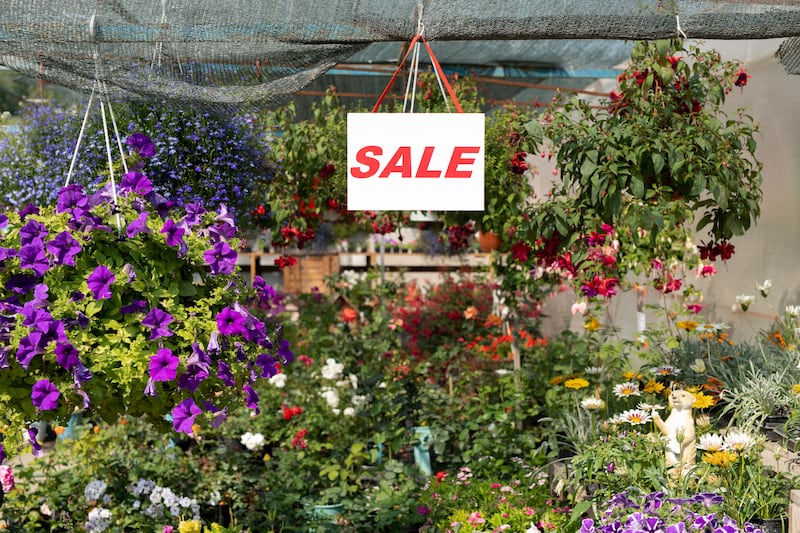
for sale at a reduced price.
As long as they’re not too battered and pot-bound, these will make a very quick recovery once their root balls are soaked in a solution of liquid seaweed and they’re then replanted in the ground. Large pots of perennials can also often be easily divided to give you three-four smaller clumps, a great way to propagate lots of new plants for the garden.
Dates for your diary
Tomorrow, Sunday, September 3rd, (11am-6pm), Autumn Garden Fair at Claregalway Castle, Claregalway, Co Galway, with a full programme of garden talks and practical floristry demonstrations, organised by Galway Flower & Garden Club, plant sales by some of the country’s top nurseries, and an international medieval tournament. See claregalwaycastle.com
Tuesday 5th September, the Irish Dahlia Society National Show takes place at Ballyknockan Farm, Wexford Y21-A526; Sunday, September 10th (10am - 5pm)
Garden Open Day at Fruitlawn Garden, Abbeyleix, Co Laois, R32W5W7, the home of garden designer Arthur Shackleton and artist Carol Booth, with a wide variety of rare & unusual plants for sale, see arthurshackleton.com
Also Saturday September 10th (11am-4pm), Fota Pant Fair takes place at Fota House & Gardens, Fota Island, Carrigtwohill, Co Cork, with plant stalls by many members of the Irish Specialist Plant Nursery, see irishspecialistnurseriesassociation.com and fotahouse.com
Starting Friday 16th September, and continuing until October 1st, the Walled Garden, Mutton Ln, Tibradden, Dublin, D16 R972, Mount Venus Nursery’s annual autumn sale with a wide range of exceptional garden plants for sale at reduced prices, see mountvenusnursery.com















